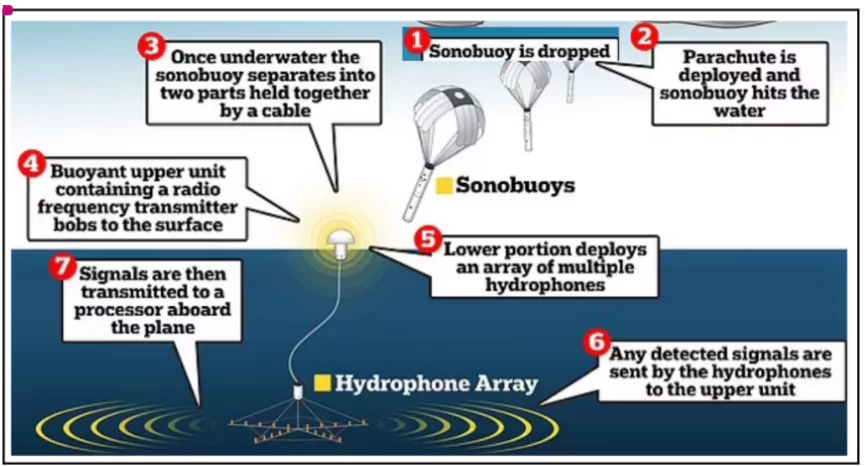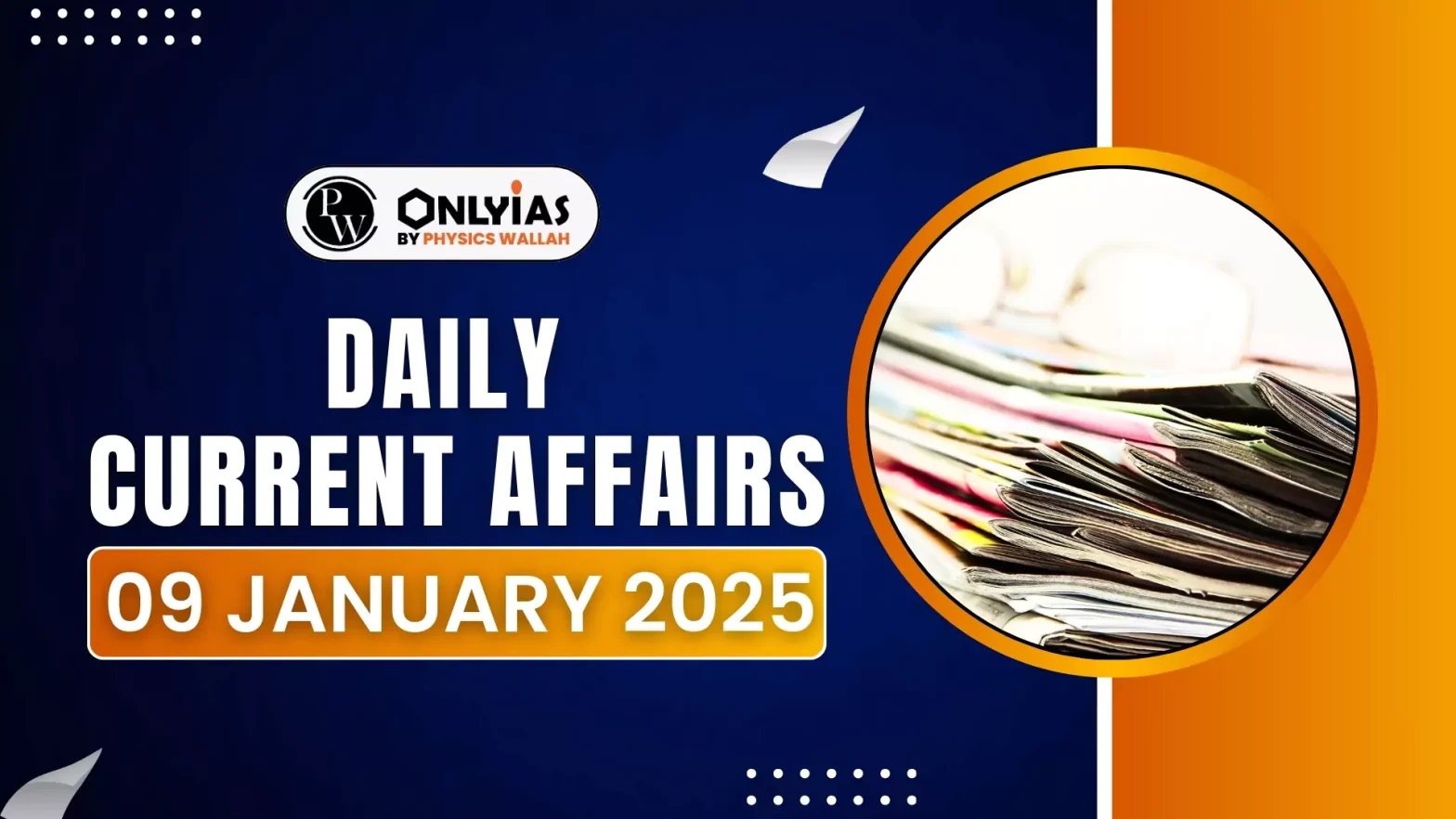India and the U.S. announced a partnership for co-production of U.S. sonobuoys to enhance Undersea Domain Awareness (UDA) for the Indian Navy.
Key Highlights of Collaboration on Sonobuoy Co-Production
- Partnership Details: The agreement is between Ultra Maritime (UM) and Bharat Dynamics Limited (BDL).
- Sonobuoys will meet U.S. Navy standards and be co-produced in both India and the U.S., aligning with ‘Make in India’ principles.
- The production will be based in Visakhapatnam, with BDL committed to meeting operational demands of the Indian Navy.
Enroll now for UPSC Online Course
About Sonobuoys

- Sonobuoys are small, expendable devices deployed from aircraft or ships to detect submarines.
- Components: They consist of a hydrophone (underwater microphone) that listens for sounds emitted by submarines, a radio transmitter that sends the acoustic data to the surface, and a buoyant float.
- Sonobuoys are used in anti-submarine warfare (ASW) to locate and track enemy submarines. They can also be used for scientific research, such as studying marine life and ocean currents
- Technical feature:
-
- UM and BDL will develop new sonobuoy technologies tailored to the unique acoustic environment of the Indian Ocean, enabling efficient wide-area searches.
- Co-produced sonobuoys will be interchangeable and interoperable among U.S. Navy, Indian Navy, and allied aircraft such as P-8, MH-60R, and MQ-9B Sea Guardian.
Significance of the Partnership
- Strategic Context
- Both India and the U.S. are increasingly concerned about the expansion of Chinese naval activities in the Indian Ocean Region (IOR).
- The partnership enhances India’s UDA capabilities and strengthens its interoperability with Quad nations (India, U.S., Japan, Australia).
- Quad and Regional Naval Synergy
-
- India operates U.S.-made platforms such as the P-8I maritime patrol aircraft, MH-60R helicopters, and MQ-9A drones.
- These platforms are used by Quad nations in joint exercises like Malabar Naval Exercises, ensuring seamless operations.
- Continued Effort for maritime defence : Sagar Defence Engineering and Boeing’s Liquid Robotics announced a partnership for scaled Uncrewed Surface Vehicles (USVs) to support UDA for the Indian Navy.
- Indo-Pacific Security: At the India-U.S. Defence Conclave2024 , the importance of interoperability and UDA to counter threats, particularly in the Indo-Pacific and IOR, to maintain regional security for trade and commerce was emphasised.
Check Out UPSC CSE Books From PW Store
Underwater Domain Awareness (UDA)
- Definition: UDA is a combination of technologies, strategies, and policies aimed at monitoring and understanding undersea activities.
- Significance: It addresses security threats, environmental challenges, and emerging issues like illegal fishing and marine pollution.
- Strategic Importance: UDA enhances maritime security, ensures regional stability, and supports economic growth by protecting critical trade and energy routes.
India and UDA
- Maritime Interests: India’s vast coastline, exclusive economic zone (EEZ), and strategic position in the Indian Ocean Region (IOR) underline the importance of robust UDA capabilities.
- Technological Advances: Deployment of Unmanned Underwater Vehicles (UUVs) like ADAMYA and integration of sonobuoys with drones showcase India’s technological progress in underwater surveillance.
- Strategic Initiatives: Programs like the Integrated Underwater Harbour Defence and Surveillance System (IUHDSS) strengthen India’s maritime security infrastructure.
- Challenges: India faces hurdles such as dependency on foreign technology, resource constraints, and complex geopolitical dynamics, including Chinese naval activity in the IOR.
- Opportunities: UDA aids in fostering maritime diplomacy, securing trade routes, and enabling environmental protection, thereby enhancing India’s role as a key maritime stakeholder.
|
![]() 9 Jan 2025
9 Jan 2025


